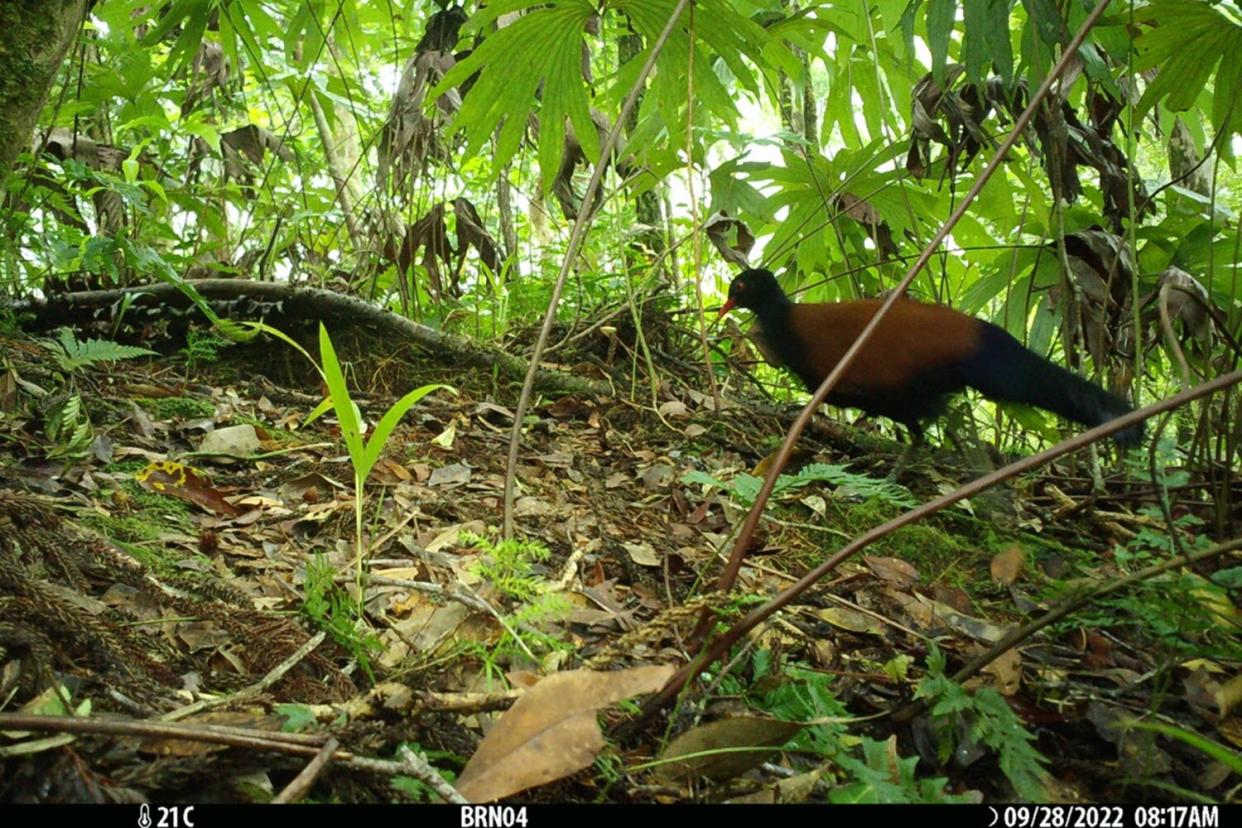Rare Pigeon Species Rediscovered in Papua New Guinea After 140 Years

Doka Nason/American Bird Conservancy
A rare pigeon species was documented for the first time in 140 years after a group of scientists and conservationists got photos of a black-naped pheasant-pigeon on Fergusson Island, a small island off the coast of eastern Papua New Guinea.
"After a month of searching, seeing those first photos of the pheasant-pigeon felt like finding a unicorn," said John C. Mittermeier, the director of the lost birds program at the American Bird Conservancy and the co-leader of the expedition. "It is the kind of moment you dream about your entire life as a conservationist and birdwatcher."
The last known time this elusive bird — which can be identified by its large size and pheasant-like tail — was found and documented was in 1882.

Doka Nason/American Bird Conservancy
RELATED: Rare Endangered Whooping Crane Hatches at Virginia Conservation Institute
The expedition team sought to rediscover the animal and set out in early September to find it. They traveled across the island and spoke with different villagers and community members to understand what locations would be best for camera traps to capture the bird.
The interviews led them to the slope of Mt. Kilkerran; there, the group set up 12 camera traps along the mountain slopes and eight additional cameras where hunters recalled previously seeing the birds.
One specific tip from a hunter from the Duda Ununa village near Mt. Kilkerran led to the find. The hunter, Augustin Gregory, told the team he had seen the bird and heard its calls in an area with steep ridges and valleys near the village.
The team set up a camera, per Gregory's reports, on a ridge near the Kwama River, and that device captured photos of the bird two days before the team was scheduled to leave the island.
RELATED: 'Elusive' Cat-Like Fossa Triplets Born for the First Time at the Chester Zoo
"When we collected the camera traps, I figured there was less than a one percent chance of getting a photo of the black-naped pheasant-pigeon," said Jordan Boersma, conservation biologist and co-leader of the expedition team. "The,n as I was scrolling through the photos, I was stunned by this photo of this bird walking right past our camera."
A previous expedition to find the black-naped pheasant-pigeon in 2019 was unsuccessful. However, scientists used the information from that trip to help them identify locations to set up cameras for their 2022 expedition.
Never miss a story — sign up for PEOPLE's free daily newsletter to stay up-to-date on the best of what PEOPLE has to offer, from juicy celebrity news to compelling human interest stories.
The team said these new photos could help with protection efforts.
"As well as giving hope for searches for other lost species, the detailed information collected by the team has provided a basis for the conservation of this extremely rare bird, which must indeed be highly threatened, together with the other unique species of Fergusson Island," said Roger Safford, senior program manager for preventing extinctions at BirdLife International.

